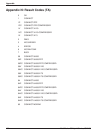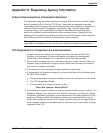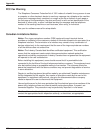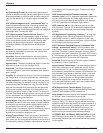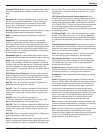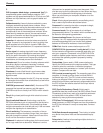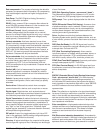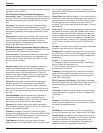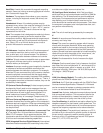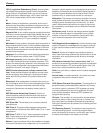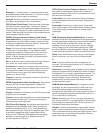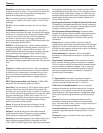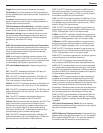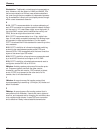
174 MultiModem ISI Hybrid Series, ISIHI-2S
Glossary
ing contributions in electronics, and sets electronic interface
standards, such as RS-23.
EISA (Enhanced Industry Standard Architecture -
pronounced “eesa”): The purpose of the EISA bus was to
provide a 32-bit bus for faster throughputs while maintaining
backward compatibility with the classic ISA bus architec-
ture.
Emulation: The process of one type of device imitating
another via a hardware or software package. Terminal
emulation, for example, allows a PC to access a mainframe
computer by generating and accepting data like a “dumb”
terminal.
Environment: A computer configuration that includes the
CPU model and system software (operating system, data
communications and database systems). It may also
include the programming language used. It sets the stan-
dards for the applications that run in it.
EPROM (Erasable Programmable Read Only Memory -
pronounced “eeprom”): A reusable PROM chip that holds
its contents until erased under ultraviolet light.
Error correction: The process of detecting distorted data
bits and requesting a retransmission or interpretation to
correct the error. Errors are introduced by bad line condi-
tions or external interface.
F
Fax (facsimile): Refers to the bit-mapped rendition of a
graphics-oriented document (fax) or to the electronic
transmission of the image over telephone lines (faxing). Fax
transmission differs from data transmission in that the
former is a bit-mapped approximation of a graphical docu-
ment and, therefore, cannot be accurately interpreted
according to any character code.
Fax card: An expansion card that, with the appropriate
software, allows a PC to operate as a fax transmitter/
receiver. PC fax cards may be able to send and receive
faxes from a file on the PC. If an external scanner is avail-
able, the PC can also transmit the scanned image via the
fax card.
Fax/Data-Modem: A multifunctional device capable of
transmitting either data or faxes. It is available as an
external unit or expansion board. It includes a fax switch
that routes the call to the fax or the data modem.
Fax server: A network resource that allows workstation
PCs to transmit faxes as though the PC had an internal fax
card or a fax modem attached.
Firmware: A category of memory chips that hold their
content without electrical power. They include ROM, PROM,
EPROM, and EEPROM technologies. Firmware becomes
“hard software” when holding program code.
Flash Memory: A memory chip that holds its content
without power, but must be erased in bulk. The term comes
from its ability to be erased “in a flash”. Flash memory is
derived form EEPROM, but are less expensive and provide
higher bit densities.
Floppy Disk: Also called a diskette. It is a round disk with a
hole in the middle, made of flexible material and houses in a
square envelope or cartridge. A disk drive holds the floppy
disk through the hole in its center and spins it within its
envelope. They can be used over and over again. Contrast
with hard disk.
Flow control: The process of regulating the speed at which
data enters or leaves a serial port. Software flow control is
implemented by communications software or by the user
sending predefined characters or packets which are recog-
nized as “pause” and “resume” indicators. Hardware flow
control is achieved by using the RTS (request to send) and
the CTS (clear to send) control lines of the RS-232 inter-
face.
Footprint: The desk or floor space that a piece of hardware
occupies. Also referred to as “real estate”.
Foreground: The application program currently running on,
and in control of, the PC screen and keyboard. The area of
the screen that occupies the active window. Compare with
background.
Format: 1. The way text is set up on a page.
2. To prepare a disk for holding information. Formatting a
disk can delete all information on it.
3. The information is structured in a file, often specific to
one application or protocol.
Frequency: A characteristic of an electrical or electronic
signal which describes the periodic recurrence of cycles.
Frequency is inversely proportional to the wavelength or
pulse width of the signal.
FSK (Frequency Shift Keying): A technology that estab-
lishes two frequencies used to represent binary values. This
was the earliest type of modulation used by 300 bps
modems.
Full-duplex: A method of transmitting and receiving data
simultaneously over a single pair of wires. Compare with
Half-Duplex.
G
Gateway: A workstation, which serves as a protocol con-
verter (translator) between two or more dissimilar networks,
providing incompatible systems.
H
Half-Duplex: The transmission of data in both directions,
but only one direction at a time. Compare with Full-Duplex.
Handshaking: A process that two modems go through at
the time of call setup to establish synchronization over the
data communications link. It is a synchronization and
negotiation process, accomplished by the exchange of
predefined, mutually recognized control codes.



